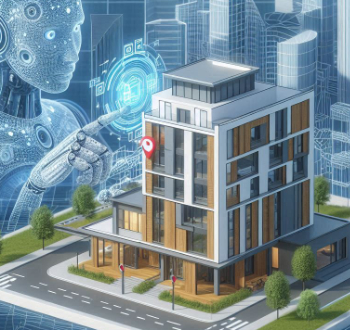Variable air volume VAV
Ventilation is necessary in buildings to remove ‘stale’ air and replace it with ‘fresh’ air:
- Helping to moderate internal temperatures.
- Replenishing oxygen.
- Reducing the accumulation of moisture, odours, bacteria, dust, carbon dioxide, smoke and other contaminants that can build up during occupied periods.
- Creating air movement, which improves the comfort of occupants.
Very broadly, ventilation in buildings can be classified as ‘natural’ or ‘mechanical’. Mechanical ventilation systems can also include heating, cooling, humidity control and air filtration. These functions are often described collectively as HVAC (Heating Ventilation and Air Conditioning).
Within these systems, ventilation and temperature can be regulated either by:
- Variable air volume (VAV), in which the temperature of the supply air remains constant, but the volume varies (also known as variable volume, constant temperature VV-CT).
- Constant air volume (CAV) in which the volume of air supply remains constant, but the temperature varies (also known as constant volume, variable temperature CV-VT).
- Variable volume, variable temperature (VV-VT sometimes referred to as variable volume and temperature - VVT).
VAV systems tend to provide closer control of air temperature than CAV systems and require lower fan speeds, as a result of which they can use less energy and generate less noise.
In simple VAV systems, air handling units (AHU) supply air through ductwork to spaces within the building, and the temperature of the spaces is moderated by adjusting the supply flow.
In more complex systems, where spaces have different heating or cooling demands, there may be additional local control of the amount of air that enters each space. Typically, cool air is supplied by an air handling unit, and thermostatically controlled dampers regulate the amount of air that enters each space. The damper must always remain partially open to allow some ‘fresh’ air into the space.
The fans in the air handling unit are adjusted (variable frequency drive VFD) to control the air pressure in the ductwork. Refrigerant flow is also adjusted to ensure that the air temperature remains constant. VAV terminal units may include fans that re-circulate a proportion of internal air along with the ‘fresh’ supply air to reduce the cooling load.
Where variations between spaces mean that some local heating is required in to maintain constant temperatures throughout a building, VAV terminal units may re-heat the supply air. Despite the apparent waste of re-heating previously cooled air, this can be more economic than providing a warm air supply from the air handling unit when there is only limited heating demand. Heat may be provided in VAV terminal units by electrical elements or by hot water coils.
In dual duct systems, both cool air and warm air ducts are provided.
Ventilation in buildings is regulated by Part F of the building regulations.
[edit] Related articles on Designing Buildings
- Air conditioning.
- Building services.
- Chiller unit.
- Computational fluid dynamics.
- Constant air volume.
- Cross ventilation.
- Dew point.
- Humidity.
- Interstitial condensation.
- Mechanical ventilation.
- Natural ventilation.
- Passive building design.
- Solar chimney.
- Stack effect.
- Thermal comfort.
- Ventilation.
- Volume.
Featured articles and news
The history of building regulations
A story of belated action in response to crisis.
Moisture, fire safety and emerging trends in living walls
How wet is your wall?
Current policy explained and newly published consultation by the UK and Welsh Governments.
British architecture 1919–39. Book review.
Conservation of listed prefabs in Moseley.
Energy industry calls for urgent reform.
Heritage staff wellbeing at work survey.
A five minute introduction.
50th Golden anniversary ECA Edmundson apprentice award
Showcasing the very best electrotechnical and engineering services for half a century.
Welsh government consults on HRBs and reg changes
Seeking feedback on a new regulatory regime and a broad range of issues.
CIOB Client Guide (2nd edition) March 2025
Free download covering statutory dutyholder roles under the Building Safety Act and much more.
AI and automation in 3D modelling and spatial design
Can almost half of design development tasks be automated?
Minister quizzed, as responsibility transfers to MHCLG and BSR publishes new building control guidance.
UK environmental regulations reform 2025
Amid wider new approaches to ensure regulators and regulation support growth.
The maintenance challenge of tenements.
BSRIA Statutory Compliance Inspection Checklist
BG80/2025 now significantly updated to include requirements related to important changes in legislation.






















